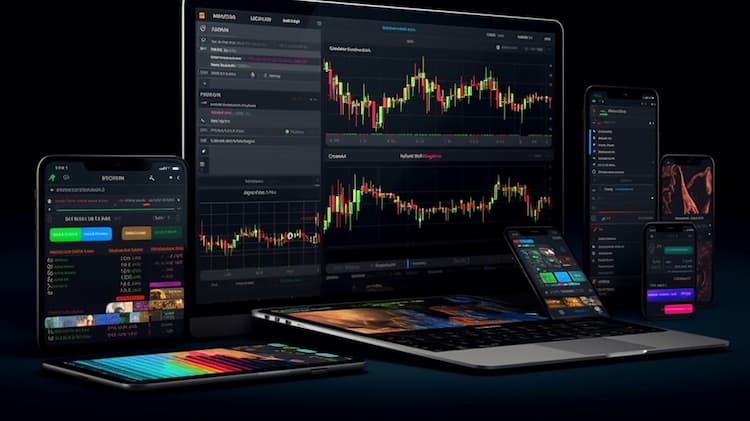
Investing in the industrial sector
In the vast landscape of investment opportunities, the industrial sector stands as a pillar of economic growth and innovation. Investors seeking exposure to this dynamic sector often turn to exchange-traded funds (ETFs) as a popular vehicle for diversifying their portfolios. Among these options, the Industrial Select Sector SPDR Fund (XLI) has traditionally been a favored choice. However, in the ever-evolving world of finance, it is essential to explore alternative investment avenues that may offer distinct advantages and potentially enhance returns.
XLI overview
When it comes to investing in the industrial sector, XLI (Industrial Select Sector SPDR Fund) is a popular choice among investors. However, there are alternative options available for those who want to explore different investment opportunities in this sector. One such alternative is the Vanguard Industrials ETF (VIS), which aims to track the performance of the MSCI US Investable Market Index (IMI)/Industrials 25/50. VIS provides investors with exposure to a broad range of companies within the industrial sector, making it a potential alternative to XLI.
XLI sector
Another alternative to XLI for investing in the industrial sector is the iShares U.S. Industrials ETF (IYJ). This ETF seeks to track the performance of the Dow Jones U.S. Industrials Index, providing investors with exposure to large and mid-sized companies in the industrial sector. IYJ offers a diversified portfolio of industrial stocks, which may present a different investment opportunity compared to XLI.
 XLI overlap Are there any alternatives to XLI for investing in the industrial sector?
XLI overlap Are there any alternatives to XLI for investing in the industrial sector?
XLI exposure
For investors looking for a global exposure to the industrial sector, the Invesco DWA Industrials Momentum ETF (PRN) could be an alternative to XLI. PRN aims to track the performance of the Dorsey Wright® Industrials Technical Leaders Index, which identifies companies in the industrial sector with strong relative strength characteristics. This ETF utilizes a momentum-based investment strategy, providing investors with exposure to industrials stocks that demonstrate positive price momentum.
Remember to carefully consider your investment goals and consult with a financial advisor if needed. Disclaimer: We are not providing any investment advisory services.
XLI investment
In addition to the aforementioned options, investors can also consider the Fidelity MSCI Industrials Index ETF (FIDU) as an alternative to XLI. FIDU seeks to provide investment results that correspond to the performance of the MSCI USA IMI Industrials Index. By investing in FIDU, investors gain exposure to a diverse range of companies within the industrial sector, including both large and mid-cap stocks. (Source: <a href="https://www.fidelity.com/ETFs/overview" target="_blank">Fidelity</a>) As with any investment decision, it is essential to thoroughly research and understand the risks associated with the chosen ETF. Disclaimer: We are not providing any investment advisory services.
While XLI is a popular choice for investing in the industrial sector, there are alternative ETFs available that can provide investors with exposure to this sector. Some notable alternatives include Vanguard Industrials ETF (VIS), iShares U.S. Industrials ETF (IYJ), Invesco DWA Industrials Momentum ETF (PRN), and Fidelity MSCI Industrials Index ETF (FIDU). Each of these ETFs has its own investment objectives and methodology, so it is crucial to assess them based on your individual investment goals and risk tolerance. Remember to conduct thorough research, consult with a financial advisor, and carefully consider your investment needs before making any investment decisions. Disclaimer: We are not providing any investment advisory services.
Source 1: XLI issuer website
Source 2: Reuters article about XLI
XLI quote and analysis
Discover the top holdings, correlations, and overlaps of ETFs using our visualization tool.
Our app allows you to build and track your portfolio.
To learn more about the XLI Industrial Select Sector SPDR Fund, access our dedicated page now.
FAQ
What are the risks associated with investing in XLI?
Some risks associated with investing in XLI, the Industrial Select Sector SPDR Fund, include general market risks, economic conditions affecting the industrial sector, volatility in industrial stocks, regulatory changes impacting the sector, competition within the industry, and the performance of individual companies within the ETF. It is important to consider these risks and conduct thorough research before making investment decisions.
How to find symbols of the stocks in XLI?
You can find the symbols of the stocks held by XLI by referring to the ETF's prospectus, the fund manager's website, or financial websites that provide information on ETF holdings. These sources typically list the individual stocks and their corresponding ticker symbols included in the XLI ETF.
Are there any alternatives to XLI for investing in the industrial sector?
Yes, there are alternative ETFs and investment options available for investing in the industrial sector. Some examples include the Vanguard Industrials ETF (VIS), the iShares U.S. Industrials ETF (IYJ), and other mutual funds or actively managed funds that focus on the industrial sector. It is recommended to compare the features, costs, and performance of different investment options and consider individual investment goals before making a decision.
What is XLI stock?
XLI is not a stock itself but an exchange-traded fund (ETF) that represents the Industrial Select Sector. It provides investors with exposure to a diversified portfolio of stocks in the industrial sector.
What is XLY in stock sectors?
XLY refers to the Consumer Discretionary Select Sector SPDR Fund, an exchange-traded fund that tracks the performance of the Consumer Discretionary Select Sector Index. It includes stocks from sectors such as retail, media, travel, leisure, and other consumer discretionary industries.





